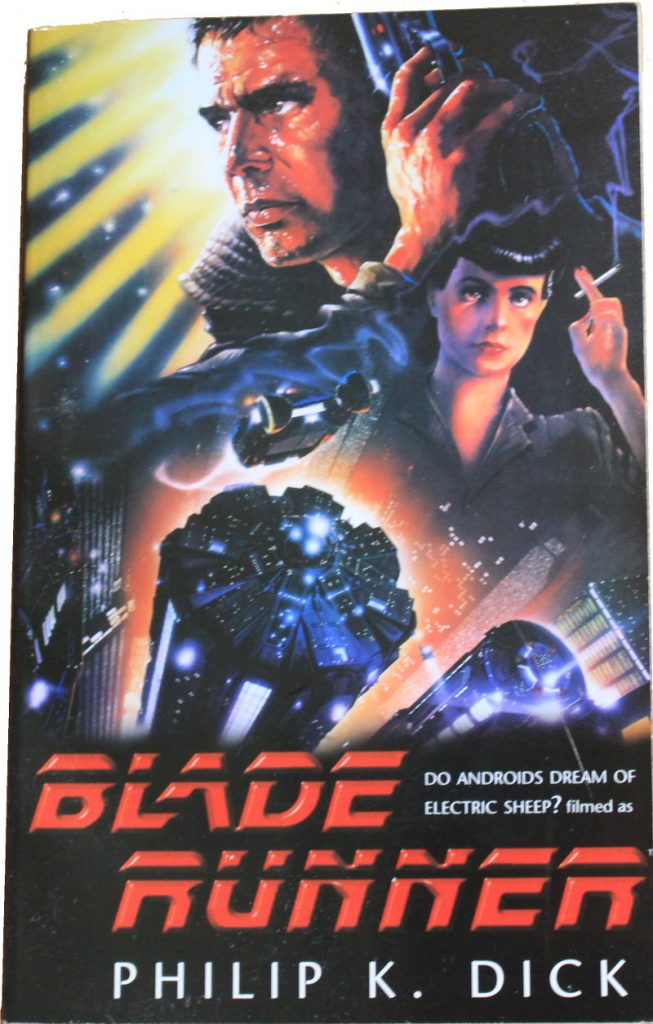Do Androids Dream of Electric Sheep?

I read this book many years ago, and recently decided it was time for another re-reading since I couldn’t remember the differences between the book and the film. Despite the book cover (my copy seems to have been published in 1999), this really is Do Androids Dream of Electric Sheep, and is just using the film title and picture of Harrison Ford as a marketing gimmick.
For those who have seen the film and not read the book (I don’t imagine there are many in the opposite category), the general description of “Rick Deckard hunts down some replicants who have illegally arrived on Earth from off-world colonies, and kills them” applies equally well to book and film. The book is quite different though, and contains a lot more world building and rather more complicated going’s on.
The book starts with Rick and his wife arguing about the settings for their Mood Organ – a device that allows you to dial a mood, for example – mood 888 “The desire to watch TV, no matter what’s on it”. The Mood Organs, as well as the VR-like empathy boxes which connect people to pseudo-religious Mercerism make up quite a big feature for the background of the book, but feel like they don’t really drive the plot. Interesting but not vital.
Deckard’s desire to own a real animal – almost all animals were killed during the last World War, and it is a requirement that every human owns and cares for an animal – is where the title comes from. Deckard owns a fake electric sheep (he’s too poor to own a real animal), and dreams of one day using his bounty money from killing the replicants to own a real animal.
Something that comes across in parts of the film, but not others, is the emptiness of Earth. Most people have left to go to the colonies, the ones left behind tend to be biologically unacceptable – unable to emigrate. The large mostly empty buildings of the film are common in the book. The bustling streets not so much. It’s a type of view of the future that seemed to be quite common in the 50s and 60s (at least in the books I read) – an Earth destroyed by nuclear war with only a limited population living on. In fact, the imagery of the second film fits the book quite well – the lifeless wilderness areas and empty cities feel a lot closer to the book than the busy streets that were the primary focus of the first.
Other differences include a Rachael who knows what she is, and who actually has plans of her own (which don’t entirely coincide with Deckard’s), and a whole plot with a second police station operating in parallel to the one Deckard works for. It also has replicants that don’t know that they are replicants.
It’s a quick read (I prefer the shorter stand alone books that came out of this period, definitely compared to the big doorstops of modern fantasy literature), with some nice ideas that didn’t make it into the film that make it worth reading. It’s not so utterly different from the film though that it’s not recognisable as being the same story.
Completely independent of the films though, it’s still a good book despite the fifty years that have passed since it was written.